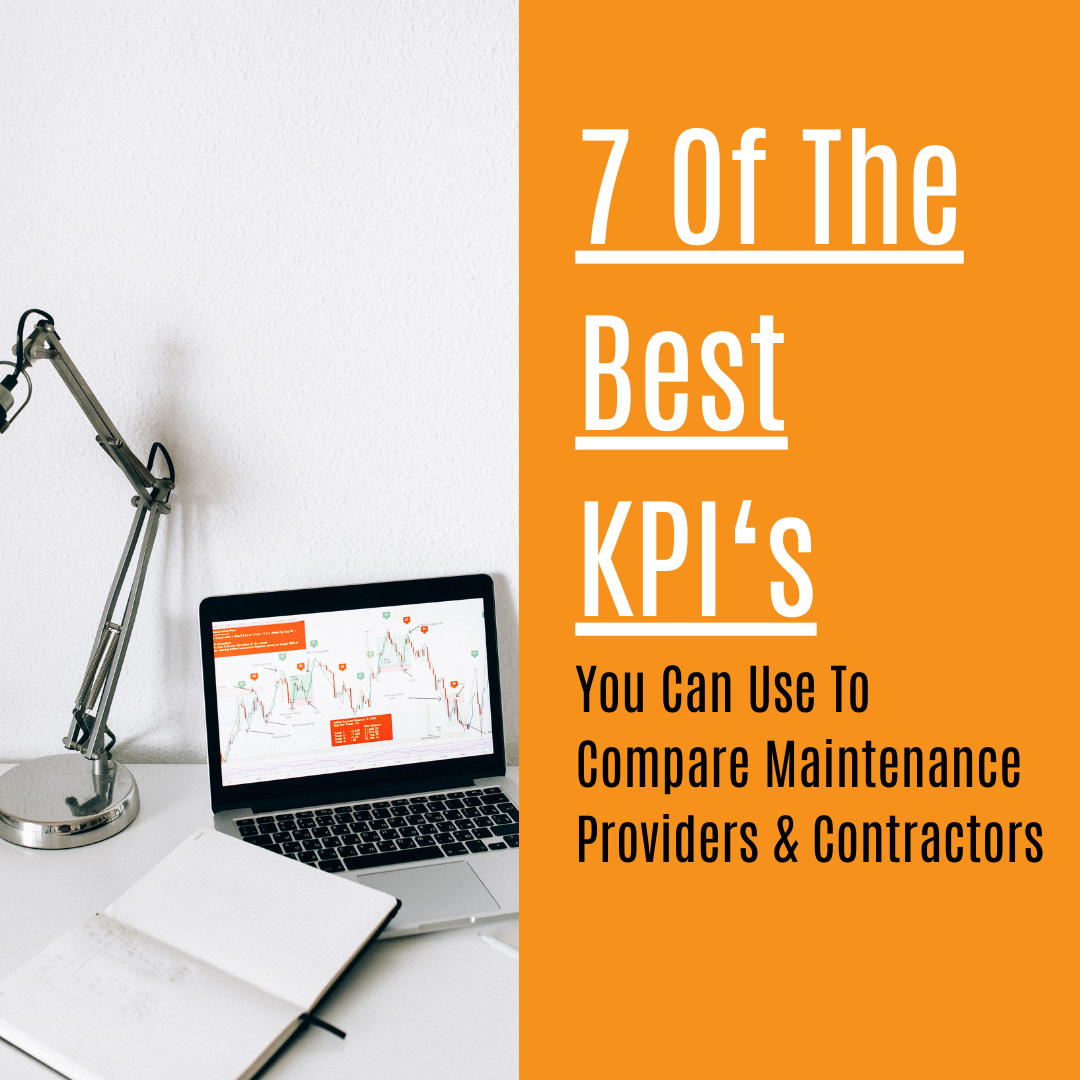
7 Of The Best KPI’s For Comparing Maintenance Providers & Contractors
Choosing the right maintenance provider or contractor can be the difference between a well-oiled facility and one plagued by problems. To make crucial decisions, you’ve got to make sense of the data. Enter Key Performance Indicators (KPIs). A great way to compare maintenance providers or contractors objectively. Here are seven of the best maintenance KPI’s you can use to size up providers and contractors. We’ll also chat about why they matter and how you can crunch the numbers.
- First-Time Fix Percentage
Why it’s a big deal: This is like a gold star for maintenance. It tells you how often a provider gets the job done right the first time without another charge to come back and complete the job. That means fewer headaches, lower costs, and less downtime.
How to figure it out: Take the number of tasks fixed on the first visit and divide it by the total number of tasks. Then, boom, multiply that by 100.
- On-Time Attendance Percentage
Why it’s a game-changer: If your provider is always fashionably late, it’s time to raise an eyebrow. These maintenance KPI’s tracks their punctuality.
How to figure it out: Count the number of tasks they show up to on time and divide it by the total number of tasks. Then, go ahead and multiply it by 100.
- On-Time Job Completion Percentage
Why it’s clutch: Timely task completion is crucial. It ensures your operations keep humming along. These maintenance KPI’s tell you if your provider is a master of deadlines.
How to figure it out: Count the number of tasks they finish on time and divide it by the total number of tasks. Then, you guessed it, multiply by 100.
- Completed vs. Outstanding Job Percentage
Why it’s nifty: This maintenance KPI tells you if your provider has a mountain of unfinished tasks piling up. They either don’t have the resources, or they are allocating them inefficiently. Lots of completed jobs is a good sign.
How to figure it out: Divide the number of completed tasks by the total number of tasks, both completed and outstanding. Then, yep, multiply by 100.
- Average Reactive Job Cost
Why it’s money: Reactive maintenance can bleed your budget dry. These maintenance KPI’s tell you the average cost of those surprise repairs by contractor. Cheapest doesn’t always win, if they are slightly more expensive but are completing more jobs first time round then you need to take this into consideration.
How to figure it out: Add up the total cost of reactive maintenance for a period. Divide it by the number of reactive maintenance tasks during that time.
- Average Planned Job Cost by Job Type
Why it’s savvy: Planned maintenance is often budget friendly. This KPI breaks down the average cost of planned tasks by type. Don’t compare different job types, as certain job types are always going to be more costly than others.
How to figure it out: Calculate the average cost for each type of planned maintenance task over a specific period.
- Customer Satisfaction Score
Why it’s the ultimate test: Your customers/ peers happiness is what really counts. This score reveals how satisfied customers are with the service.
How to figure it out: After each task, ask your customers to rate their satisfaction. Tally up the scores and calculate the average.
These KPIs aren’t just fancy numbers; they’re your ticket to finding and comparing a maintenance provider or contractor. Remember, what’s considered a good score can vary depending on your objectives and the benchmarks you want to set. You need to consider multiple KPI’s in order to determine who is performing the best.
So, keep an eye on these indicators, and you’ll make a data-backed choice that’ll keep your facilities in tip-top shape.
Author
Charlie Bown
Ex Facility Manager, I feel your pain!

